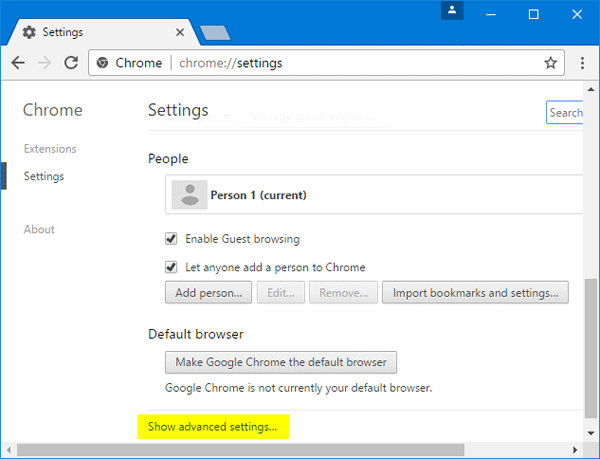

Source: ( this article is the opposite of what I just showed you to do ) IUSR is a built in account it should automagically authenticate it's self Make sure username is set to MACHINENAME\IUSR_MACHINENAME obviously replacing MACHINENAME with the name of your server/machine. In the console tree, right-click the Web site, virtual directory, or file for which you want to configure authentication, and then click Properties.Ĭlick the Directory Security or File Security tab (as appropriate), and then under Anonymous and access control or Authentication and access control, click Edit.Ĭlick to uncheck all options next to the authentication method or methods that you want are currently checked, and then click OK. Start IIS Manager or open the IIS snap-in.Įxpand Server_name, where Server_name is the name of the server, and then expand Web Sites. How to un-configure Authentication in IIS Now you should look into your IIS settings. Inetpub\wwwroot (or C:\MyOwnFolder) ASPNET Read, execute Inetpub\wwwroot (or C:\MyOwnFolder) IUSR_MachineName Read, execute

Inetpub\wwwroot (or C:\MyOwnFolder) IIS_WPG Read, execute Inetpub\wwwroot (or C:\MyOwnFolder) System Full control Let's get this straight you have I am presuming a windows server 2003/2003 r2 box or xp machine with IIS6.īefore we dig deeper check the following out make sure you have setup a new site in iis6, pointing to a folder in C:\inetpub\wwwroot\, if not there pointing to C:\MyOwnFolder or C:\Program Files\SomeFolder is fine you will need make sure folders have the following permissions: Inetpub\wwwroot (or C:\MyOwnFolder) Administrators Full control I have fallen in the hands of this issue myself but this article was a life saver I keep it in my bookmarks under IIS solutions lol. I would love to rewrite this lovely article and take credit but that's cheating.
:max_bytes(150000):strip_icc()/001-show-passwords-in-chrome-4580283-3a9dc19953d3434ea92580525f30cb66.jpg)
All you need to know, let me know how it goes.


 0 kommentar(er)
0 kommentar(er)
